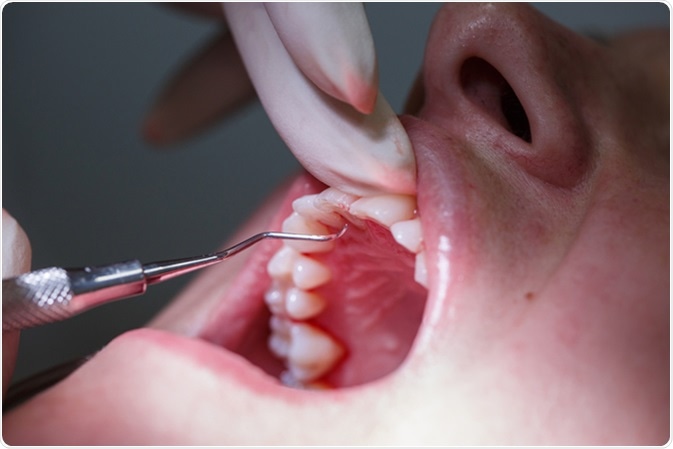For The Latest Medical News, Health News, Research News, COVID-19 News, Pharma News, Glaucoma News, Diabetes News, Herb News, Phytochemical News, Thailand Cannabis News, Cancer News, Doctor News, Thailand Hospital News, Oral Cancer News, Thailand Doctors
Periodontitis, or periodontal disease, is an infection of the structures in the mouth that surround the teeth, such as the gums, periodontal ligament, alveolar bone, and cementum at the root of the tooth. There are many possible causes of periodontitis, which will be described in more detail in this article.

The primary cause of periodontitis is bacteria in dental plaque. Dental plaque, which is a mix of the bacteria, mucus and other particles, forms and settles on and around the teeth. The immune system attempts to eradicate the bacteria, which can lead to inflammation in the area and can potentially cause damage to the gums, periodontal ligament, alveolar bone, and cementum.
Brushing and flossing the teeth regularly helps to remove plaque but it soon starts to build up once again after they have been cleaned. Therefore poor oral hygiene is associated with the development of periodontitis.
Plaque around the teeth that has not been removed can sometimes harden to form tartar. Tartar cannot be removed easily with brushing and, instead, a professional cleaning at the dentist is required. When plaque and tartar remain on the teeth and gums for a long time, they can cause significant damage to the gums.
Patients may report red, swollen and bleeding gums, which is characteristic of gingivitis, the earliest stage of periodontal disease when only the gums are affected. Gingivitis can usually be reversed with regular cleaning of the teeth by brushing, flossing and dental cleaning.
Gingivitis that has not been adequately treated can progress to periodontitis, which involves inflammation of the tissue surrounding the teeth. In this case, the gums can be pulled back from the teeth, forming little pockets that can easily become infected.
The immune system works to eradicate the bacteria from the area. This can result in the release of chemicals, in addition to bacterial toxins, that can lead to degradation of the bone and connective tissue that support the teeth and hold them in place. In severe cases, the teeth may be destroyed or fall out.
There are several risk factors that increase the risk that an individual will be affected by periodontal disease. These may include:
There are several health conditions that have been linked to the occurrence of periodontitis. These seem to have an increased incidence in patients with the disease. These include: